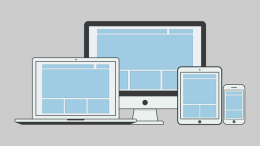
Guest author David Cannington is co-founder of audio wearables company Nuheara.
Recently, at the annual Dreamforce Conference in San Francisco, Microsoft CEO Satya Nadella declared a new era in computing defined by wearable devices. “People keep asking the question what’s next after the smartphone? There are early signs of it, things you wear on your wrists, in your ear and on your eyes,” he said.
See also: Fitness Wearables Are Not Reaching The Right Users—But They Could
The industry has been foaming at the mouth over wrist tech, such as smartwatches and fitness trackers, and smart eyewear, like virtual or augmented reality goggles. Gizmos worn in the ear, however, haven’t been quite so trendy.
But this high-profile nod to such “hearables” (or wearable technology worn in the ear) and other signs suggest that could change before long.
The Rise Of Hearables
Like the Microsoft CEO, industry analysts and experts also acknowledge the rise of “hearables.”
Back in 2014, when the term “hearables” got coined and started gaining more traction, analyst Nick Hunn predicted it would be a $5 billion industry by 2018 and a major factor in the overall wearables market.
Since then a number of startups have launched crowdfunding campaigns for hearable products. Although many of these products have yet to ship, businesses like Bragi and Doppler Labs have gone on to raise significant funding rounds on the back of successful crowdfunding campaigns.
The space is clearly catching the eye of the investment community. As reported in Techcrunch, Crunchbase data confirms that nine venture capital–funded and crowdfunded “hearable” companies captured nearly $52 million in funding since 2009.
This financial backing of the hearables sector looks like a very positive sign of things to come.
Hearables Are Not Just Another Headset
With new market categories, it can take time for companies to define the winning product-market fit. This is especially true with consumer-facing companies who are catering to people with rapidly changing needs and preferences.
Hearables are more than just variations on existing headsets. The market is already overcrowded with headsets, and existing models tend to have limited technology differentiation for audio quality or noise cancellation capabilities.
The new crop of ear-oriented devices boast advancements that could create new opportunities and solve a wide range of consumer problems, beyond just taking calls or listening to music. Think sensors, intelligent use of microphones, audio digital-signal processing, smart battery miniaturization and other technologies more commonly associated with computers, not headsets.
Fundamentally, it will be the proprietary software and the smarts that reside inside these hearable devices that will deliver the power to solve real consumer problems and define this new hearables product category.
Hearables Segmentation
New hearables companies are targeting a range of consumer needs with varying technologies, making for an early segmentation of the market. These distinctions may offer a snap shot into how the industry will unfold in the coming years.
Bragi’s Dash product targets the sports market with sound management, biometric measurements and waterproof features. Doppler Labs’ product, Here, caters to young, hip music lovers with “a sound studio in your ears” that gives them better audio controls. We’re taking a different approach with our IQbuds product, an “intelligent hearing solution” that lets (primarily older) users control audio from their digital world, as well as environmental sound.
Although all three companies use some components of each other’s technology stack, we aim to drive adoption and consumer loyalty by going after separate consumer segments with a differentiated product-market fit.
New hearables companies are betting that functionality embedded in small in-ear devices, powered by apps, will win over consumers. So it’s less about the quality of the sound or clearer phone calls, and more about how miniaturized technology stacks can deliver a better quality of life for users.
The Future
Today, most smart devices work with some kind of headset. As the connected gadgets market continues to grow globally, it stands to reason that the hearables market will follow.
If there’s one thing with the greatest potential to accelerate this niche, it may be voice technology. Voice recognition apps are getting better, smarter and more versatile in their ability to deliver solutions to both consumers and companies, and they require a best-of-breed hearing platform.
The growth of smart devices combined with the new voice-enabled world represents significant business and technological opportunities for the hearables market, which seems set to become a major force in the wearables market. It may even overtake wrist-worn activity trackers in the years to come.
The sector will definitely be one worth watching, as hearables companies apply technology innovation to solve consumer problems in this ever more connected world.
Lead photo by Ike Valdez

















